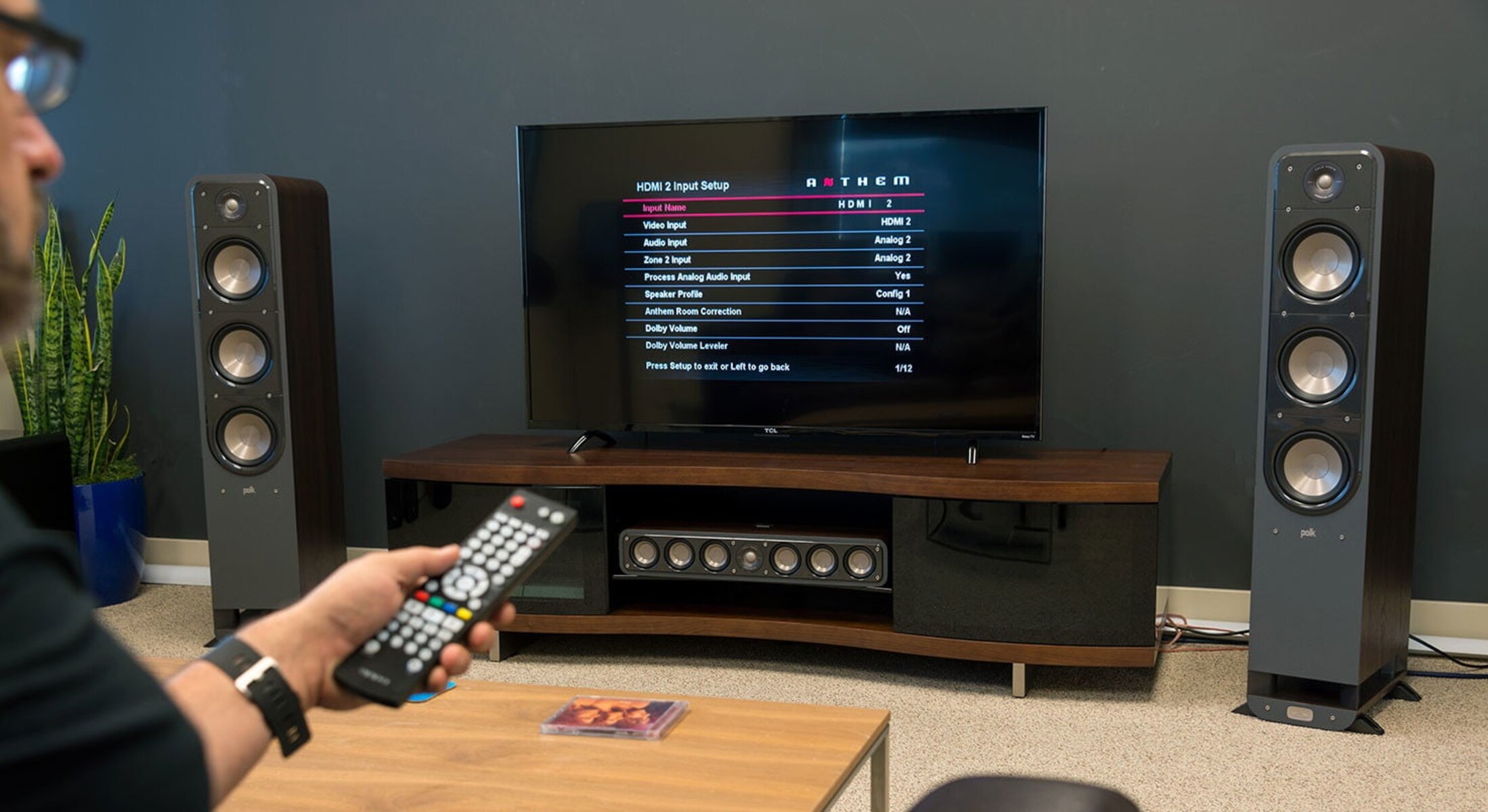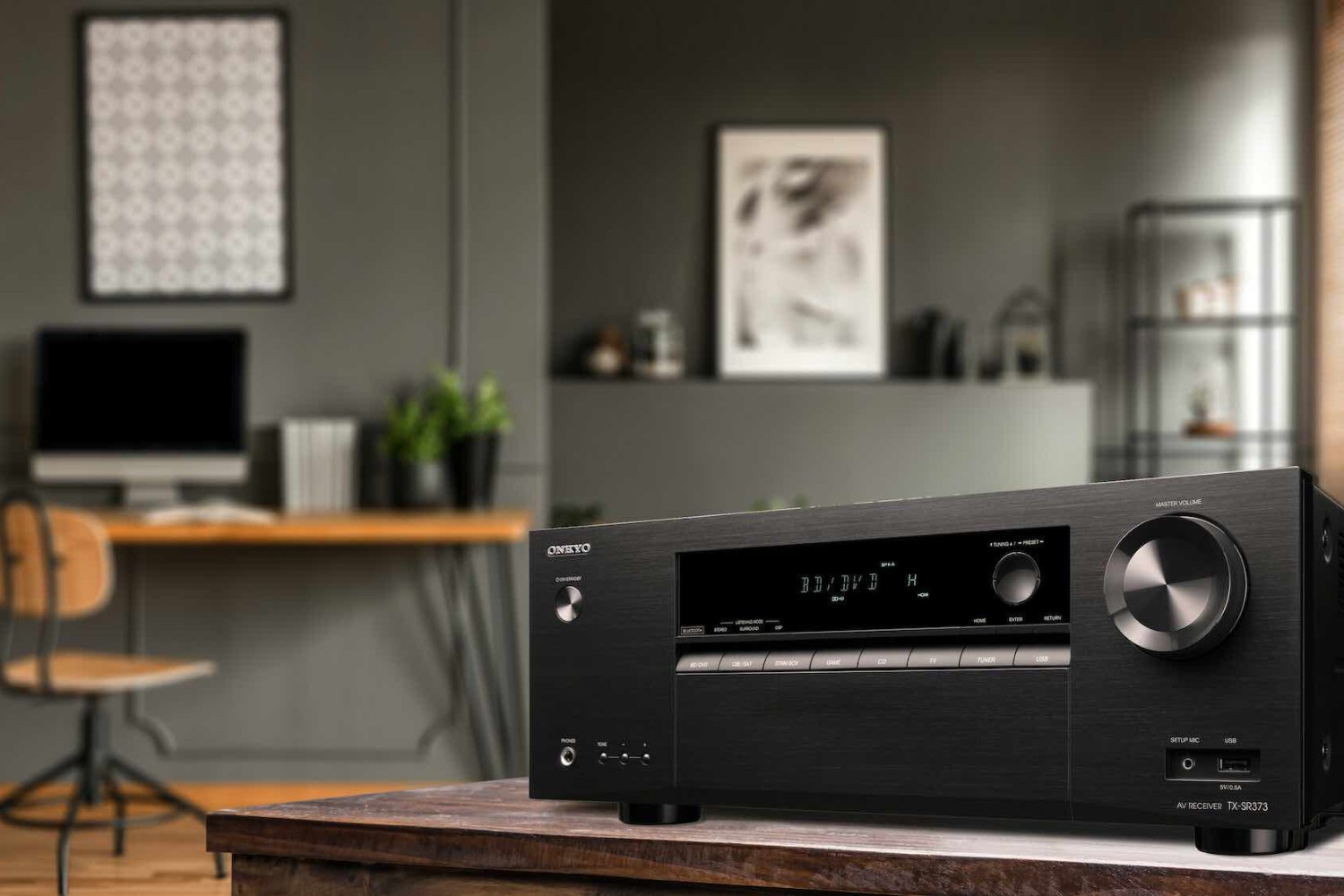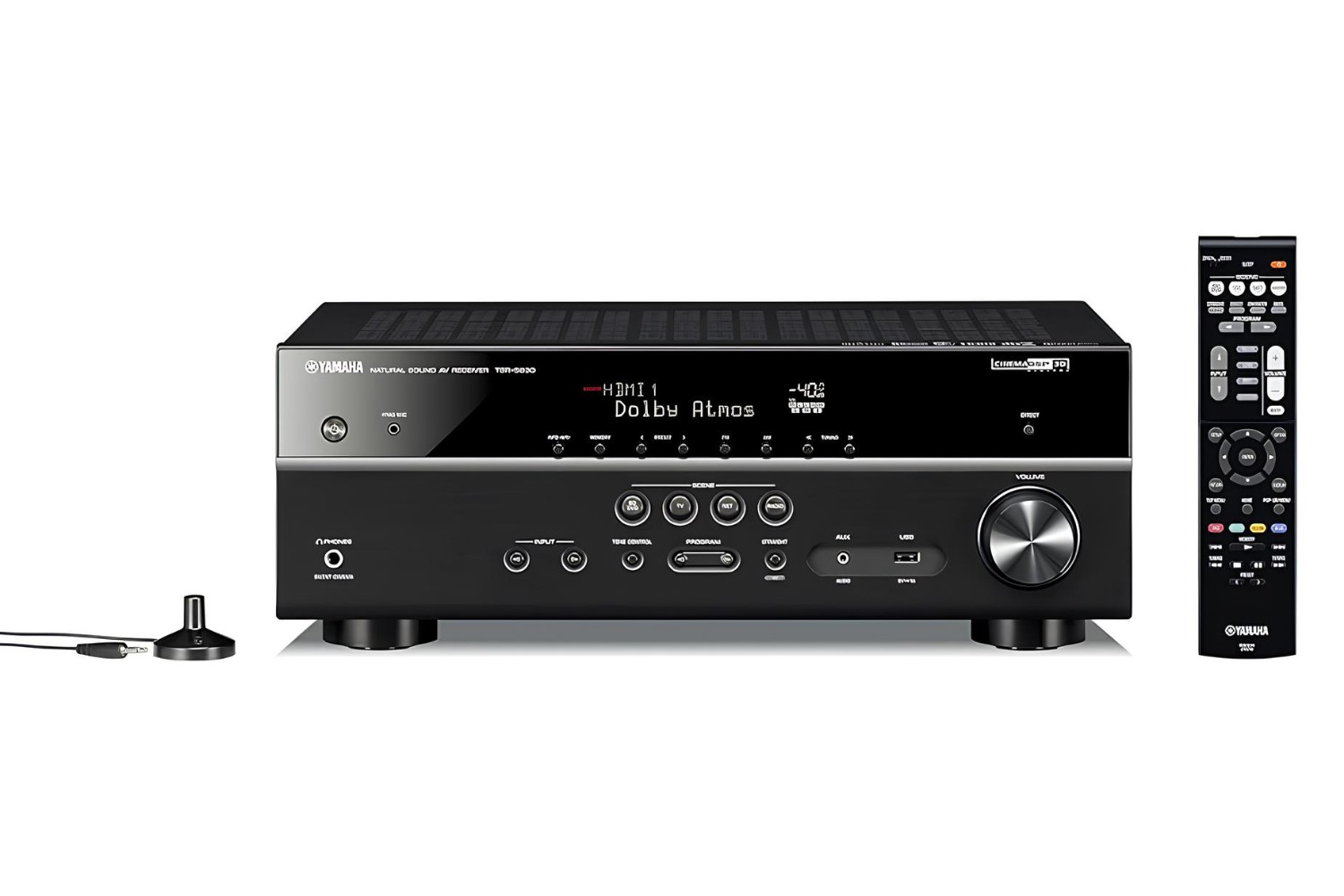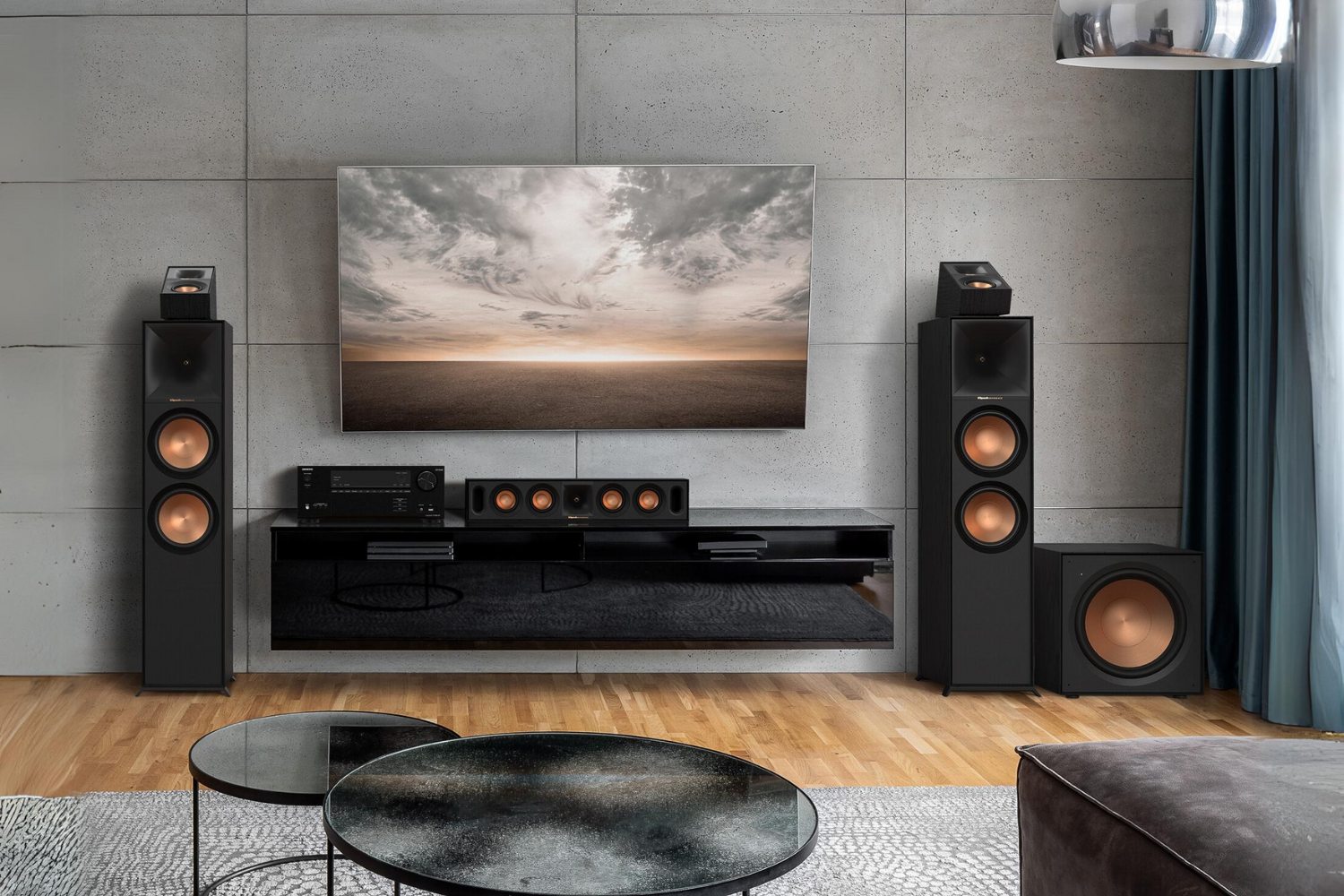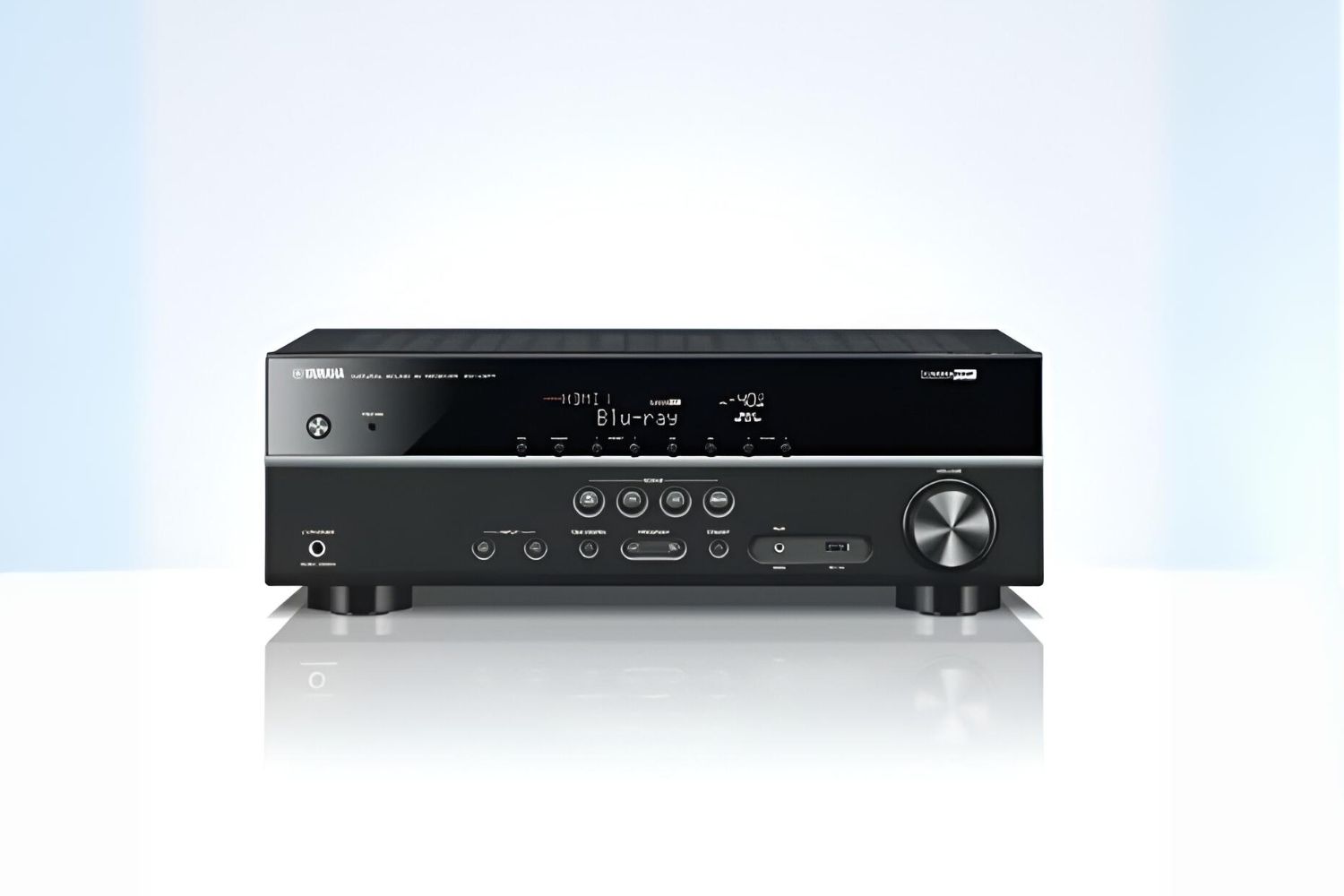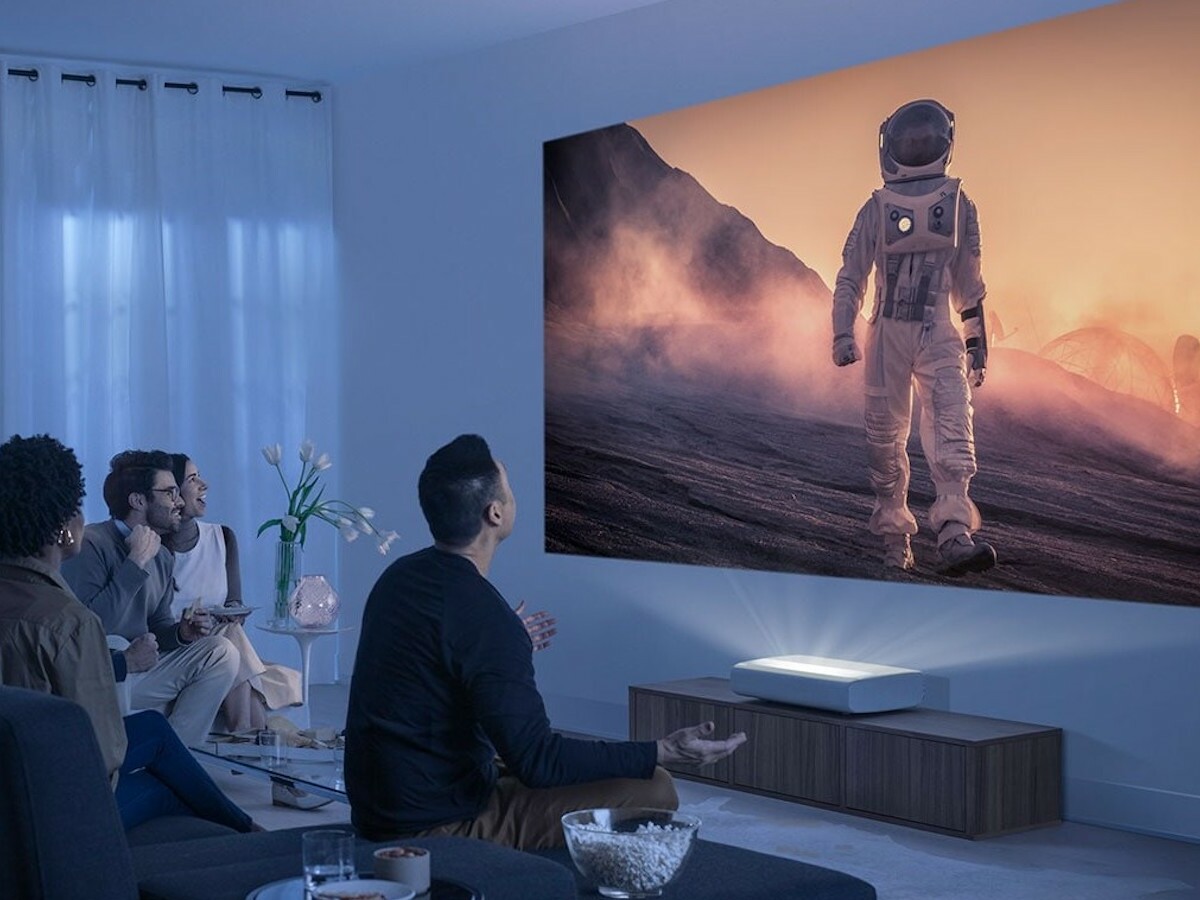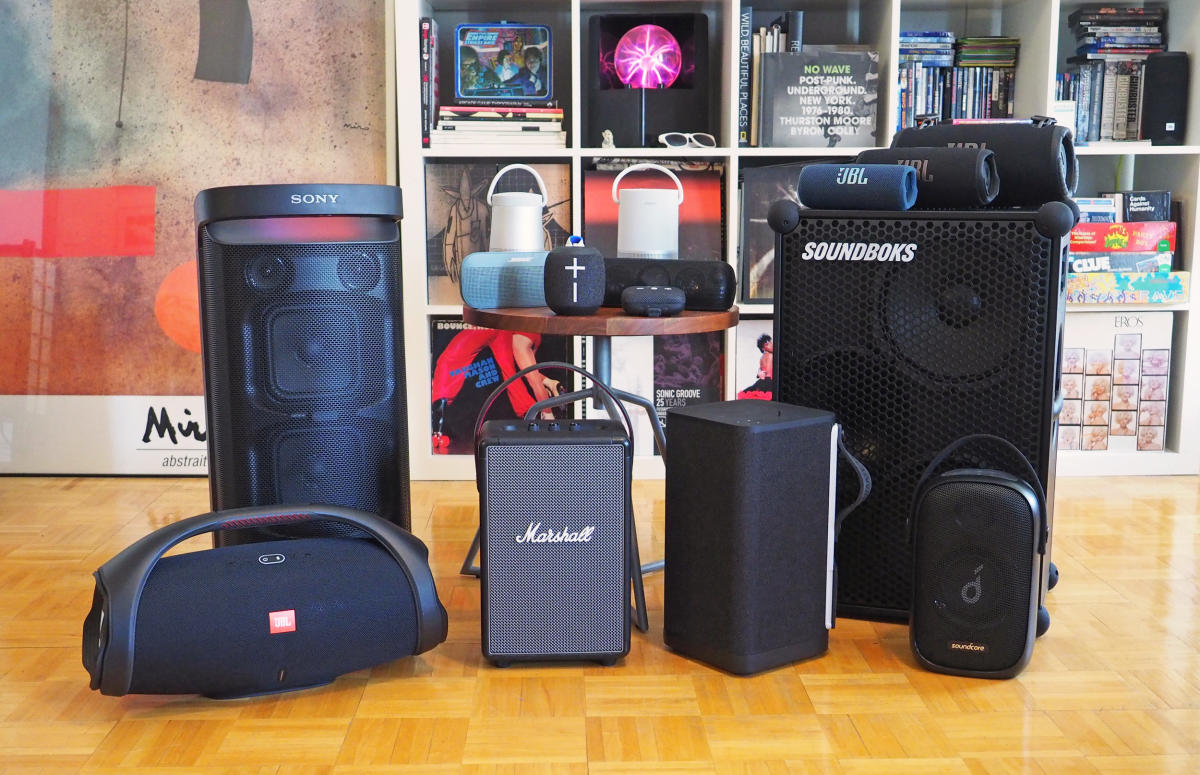Introduction
Welcome to the world of immersive audio experiences! Setting up a 7.2 surround sound system in your home is a fantastic way to enhance your audio quality and take your movie nights, gaming sessions, and music listening to a whole new level. With a 7.2 system, you can create a surround sound environment that will transport you right into the heart of the action, with sounds coming from all directions.
Before we dive into the nitty-gritty of setting up your 7.2 surround sound system, let’s take a moment to understand what it actually is. A 7.2 system consists of seven speakers and two subwoofers, hence the “7.2” designation. The seven speakers are strategically positioned around the room to create a surround sound effect, while the two subwoofers deliver deep and powerful bass.
Now, you might be wondering, why go through the trouble of setting up a 7.2 system when you can simply use the built-in speakers of your TV or computer? Well, the answer lies in the superior audio quality and immersive experience that a dedicated surround sound system offers. It allows you to hear every subtle detail, feel the impact of explosions, and be enveloped by the sound in a way that standard speakers simply can’t replicate.
Setting up a 7.2 surround sound system may seem intimidating, but fear not! In this guide, we’ll walk you through the entire process, from preparing your room for optimal sound to installing and calibrating the speakers. Whether you’re a novice or a tech enthusiast, this step-by-step guide will help you create an immersive audio experience that will leave you in awe every time you press play. So, let’s get started with the exciting journey of setting up your very own 7.2 surround sound system!
Understanding 7.2 Surround Sound System
Before we delve into the setup process, it’s important to understand the key components and configurations of a 7.2 surround sound system. This knowledge will help you make informed decisions when selecting speakers and setting up your system.
A 7.2 surround sound system typically consists of seven speakers and two subwoofers. The seven speakers are divided into three categories: front, center, and surround. The front speakers (left, center, and right) are responsible for delivering the majority of the audio, such as dialogue and music. The center speaker, positioned above or below your TV, ensures clear and balanced sound for on-screen action.
The surround speakers (left surround, right surround, left rear, and right rear) provide the immersive aspect of the system, creating the illusion of sound coming from all directions. Placing these speakers at the sides and behind the listening area enhances the cinematic experience by reproducing ambient sounds, special effects, and background noise.
In addition to the seven speakers, a 7.2 system includes two subwoofers to handle low-frequency sounds, also known as bass. The subwoofers add depth, impact, and realism to explosions, music, and other audio elements. Having two subwoofers in a 7.2 setup distributes the bass evenly throughout the room, resulting in a more even and immersive audio experience.
It’s important to note that the number in “7.2” signifies the number of speakers and subwoofers in the system. If you see other numbers such as “5.1” or “9.2,” they represent different configurations with varying speaker and subwoofer counts. The first digit indicates the number of main speakers, and the second digit represents the number of subwoofers.
When choosing speakers for your 7.2 system, prioritize quality over quantity. Look for speakers that provide clear, accurate sound reproduction and complement one another in terms of tonal balance. It’s also important to consider the power handling capabilities of the speakers to ensure they can handle the desired volume levels without distortion.
Now that you have a good understanding of the components and configuration of a 7.2 surround sound system, you’re ready to move on to the next step: preparing your room for optimal sound. Let’s explore that in the next section.
Room Preparation for Surround Sound
Now that you have an understanding of the components of a 7.2 surround sound system, it’s time to prepare your room to maximize its audio potential. Proper room preparation is essential for achieving optimal sound quality and creating an immersive audio experience.
The first step in room preparation is to ensure that your space is acoustically friendly. Ideally, you want a room with minimal echo and sound reflections. Rooms with carpeted floors, curtains, and upholstered furniture tend to absorb sound better than rooms with hard surfaces like wood or tile. If your room has hard surfaces, consider adding area rugs, curtains or drapes, and plush furniture to help dampen sound reflections.
Next, take note of any potential sound distractions or obstructions in your room. Move or eliminate any objects that could interfere with the sound waves coming from your speakers. Common obstructions include large pieces of furniture, plants, or shelves filled with objects. By clearing the space around your speakers and ensuring a clear path for sound, you will minimize any interference or audio distortion.
Positioning your speakers correctly is crucial for achieving an immersive surround sound experience. For the front speakers, place them at ear level when seated. The center speaker should be directly above or below your TV, aligned with the height of the front speakers. The surround speakers should be positioned at ear level or slightly above, facing the listening area. The rear surround speakers can be placed slightly behind the listening area, facing inwards. Experiment with speaker placement to find the ideal positions where you can achieve a balanced and enveloping soundstage.
Don’t forget about the subwoofers! Ideally, place them in different corners of the room to distribute bass evenly. This helps minimize “booming” or uneven bass response. Experiment with subwoofer placement and adjust the settings to find the sweet-spot where the bass is powerful and well-balanced with the rest of the audio.
Lastly, consider the layout and furnishings of your room. Avoid placing your listening area too close to walls, as this can cause reflections and alter the sound quality. If possible, position the listening area in the center of the room to minimize the impact of room modes, which are natural resonances that can affect the sound quality. Additionally, avoid too many hard surfaces in your room, such as glass tables or bare walls, as they can cause sound reflections and interfere with the overall audio experience.
By taking the time to properly prepare your room for your 7.2 surround sound system, you can optimize the audio quality and fully immerse yourself in your favorite movies, games, and music. With the room prepared, it’s time to move on to the next step: selecting the right speakers for your system. Let’s explore that in the next section.
Choosing the Right Speakers for Your System
When it comes to creating a stellar 7.2 surround sound system, choosing the right speakers is crucial. The speakers you select will have a significant impact on the overall audio quality and immersion of your setup. Here are some key factors to consider when choosing speakers for your system:
1. Speaker Type: There are various types of speakers to choose from, including floor-standing towers, bookshelf speakers, and satellite speakers. Each type has its advantages and considerations. Floor-standing towers typically offer robust bass response and can handle higher volume levels, while bookshelf speakers are more compact and can be easily placed on shelves or stands. Satellite speakers are a popular choice for surround sound setups as they can be mounted on walls or placed on stands.
2. Speaker Frequency Range: Pay attention to the frequency response of the speakers you’re considering. A wider frequency range allows for more accurate and detailed sound reproduction. Look for speakers that can reproduce both low and high frequencies, ensuring that you capture the full range of sounds in your media.
3. Speaker Impedance: The speaker impedance is an important consideration, especially when it comes to matching the speakers with your receiver. Ensure that the speakers you choose have a compatible impedance rating with your receiver to avoid any potential compatibility issues or damage to your equipment.
4. Power Handling: Consider the power handling capabilities of the speakers. This refers to the amount of power (expressed in watts) that the speakers can handle without distortion. Ensure that the speakers can handle the power output of your receiver to prevent any unwanted clipping or distortion.
5. Speaker Brand and Reputation: Look for reputable speaker brands that are known for their quality and performance. Research customer reviews and professional recommendations to get an idea of the speaker’s reliability, durability, and sound quality.
6. Budget: As with any purchase, it’s essential to consider your budget. Determine how much you’re willing to invest in your speakers and find a balance between quality and affordability. Remember, good speakers can significantly enhance your audio experience, so it’s worth considering a slightly higher budget for better quality.
Remember, each person’s preferences and room acoustics can vary, so it’s crucial to trust your ears and conduct thorough research before making a final decision. Consider visiting audio stores or attending demonstrations to listen to different speakers in person and determine which ones suit your preferences.
By carefully considering these factors and selecting the right speakers, you’ll be one step closer to enjoying a dynamic and immersive audio experience. But placing the speakers in the right positions is equally important, and that’s what we’ll discuss in the next section.
Placing Your Speakers for Optimal Sound Experience
Once you have chosen the right speakers for your 7.2 surround sound system, the next step is to position them correctly to achieve the best possible sound experience. Proper speaker placement ensures balanced audio, accurate localization of sounds, and a more immersive surround sound environment. Here are some guidelines to follow when placing your speakers:
1. Front Speakers: The front speakers, including the left, center, and right speakers, should be positioned at equal distances from each other and angled slightly towards the listening area. The center speaker should be placed directly above or below your TV, while the left and right speakers should be at ear level when seated. This alignment ensures a clear and cohesive soundstage, where dialogue and music come from the center and action sequences pan smoothly between the front speakers.
2. Surround Speakers: The surround speakers, including the left surround, right surround, left rear, and right rear, should be positioned slightly above ear level and to the sides and behind the listening area. Aim to create an immersive sound experience by placing these speakers at equal distances from your seating position and angling them to face towards the center. This positioning allows for an enveloping soundstage, where ambient sounds and effects surround you.
3. Subwoofers: The placement of subwoofers is crucial for achieving balanced and impactful bass. Experiment with different locations in your room to find the best bass response. One common technique is to place the subwoofers in different corners of the room to distribute bass evenly. This approach helps minimize bass build-up in certain areas and ensures a smoother bass response throughout the room. You may need to adjust the positioning and settings of the subwoofers, such as crossover and volume controls, to achieve the desired bass performance.
4. Speaker Distance from Walls: Be mindful of the proximity of your speakers to walls. Placing speakers too close to walls can result in unwanted reflections and resonances, affecting the overall sound quality. Experiment by moving the speakers a few feet away from walls to reduce these reflections and achieve a cleaner, more accurate audio reproduction.
5. Speaker Toe-In: To enhance the clarity and focus of the soundstage, consider angling the front and center speakers slightly towards the primary listening position. This technique, known as “toe-in,” ensures that the sound arrives directly at the listener instead of bouncing off walls or other objects in the room.
Keep in mind that speaker placement can be affected by the size and layout of your room, as well as furniture and acoustic treatments. It may require some trial and error to find the optimal speaker positions. Use your ears as a guide and make small adjustments until you achieve the best sound balance and immersion.
As you explore different speaker placements, use a test audio track with distinct tones or surround sound effects to evaluate the positioning. Listen for accurate localization of sounds, smooth transitions between speakers, and a cohesive, immersive sound experience.
Now that you know how to position your speakers for optimal sound, it’s time to move on to the next step: installing your speakers and receiver. We’ll guide you through the installation process in the next section.
Installing Your Speakers and Receiver
With your speakers properly positioned, it’s time to install them and connect them to your receiver. Follow these steps to ensure a successful installation:
1. Unpack and Prepare: Begin by unpacking your speakers and inspecting them for any damage. Ensure that all necessary cables and accessories are included. Then, prepare your room by organizing the cables and clearing a pathway for easy access to the speaker locations.
2. Speaker Connections: Start by connecting the speaker cables to the corresponding speaker terminals on the back of your receiver. Ensure that you match the positive (+) and negative (-) terminals correctly to avoid phase cancellation. Use banana plugs, pin connectors, or stripped wire ends, based on the speaker and receiver connections. Repeat this process for each speaker in your system.
3. Subwoofer Installation: Connect the subwoofer cable from the subwoofer pre-out on your receiver to the line-in or LFE input on your subwoofer. This will allow the receiver to send the low-frequency signals to the subwoofer for enhanced bass response. Adjust the subwoofer’s control settings, such as crossover and volume, as per your room and listening preferences.
4. Receiver Placement: Find a suitable location for your receiver near your TV or media setup. Ensure adequate ventilation around the receiver to prevent overheating. Connect the power cord and other necessary cables, such as HDMI cables for audio and video input and output.
5. Cable Management: Bundle and route the speaker cables neatly to avoid clutter and potential tripping hazards. Use cable clips, cable conduits, or cable raceways to manage and conceal the cables along walls or furniture. This will not only provide a cleaner look but also protect the cables from damage.
6. Powering On: Once all the connections are made, power on your receiver and navigate its menu to configure the speaker settings. This may include selecting the speaker size, crossover frequencies, and channel levels. Consult your receiver’s manual for detailed instructions on accessing and adjusting these settings.
7. Audio Calibration: Many receivers come with built-in automatic sound calibration systems. Utilize these features to optimize the audio performance. This process typically involves placing a microphone at the listening position and allowing the receiver to emit test tones and analyze the room’s acoustic characteristics. Follow the on-screen prompts to complete the calibration process.
8. Testing the System: After the installation and calibration, play audio content to test your surround sound system. Ensure that all speakers are functioning correctly and that the audio is properly balanced. Adjust individual speaker levels, if necessary, to achieve an immersive and balanced sound experience.
Taking the time to properly install and connect your speakers and receiver is essential for achieving optimal sound quality and maximizing the potential of your surround sound system. With everything set up, it’s time to connect your media devices and enjoy your favorite movies, games, and music in breathtaking audio quality.
Next, we’ll explore the process of connecting your media devices to your 7.2 surround sound system. Let’s dive into that in the next section.
Calibrating Your System for the Perfect Sound
Calibrating your 7.2 surround sound system is a crucial step in achieving the perfect sound. Calibration ensures that the audio is balanced, properly aligned, and optimized for your listening environment. Follow these steps to calibrate your system:
1. Use Room Correction Software: Many receivers come equipped with room correction software or automatic calibration systems. These systems analyze the acoustics of your room and adjust the audio settings accordingly. Consult your receiver’s manual to access the calibration feature and follow the on-screen prompts. Place the calibration microphone at your primary listening position for accurate measurements.
2. Adjust Channel Levels: During the calibration process, your receiver may prompt you to adjust the volume levels of each speaker. Use the receiver’s setup menu to balance the volume levels, ensuring that all speakers are outputting sound at the same perceived level. This step is crucial for achieving a cohesive and immersive audio experience.
3. Set Crossover Frequencies: Adjusting the crossover frequencies helps determine the range of frequencies that each speaker handles. This prevents overlapping and distortion. The ideal crossover frequencies depend on your speaker capabilities and the size and layout of your room. Consult your receiver’s manual or follow the recommendations provided by the room correction software for guidance on setting the appropriate crossover frequencies.
4. Test Surround Sound Effects: Play audio content that features surround sound effects to ensure that the sound is properly distributed among the surround speakers. Listen for accurate localization of sounds as they pan across the speakers. Make adjustments to speaker placement, angles, or levels if necessary to achieve the desired surround sound effect.
5. Fine-Tuning EQ Settings: If your receiver allows manual equalizer adjustments, consider fine-tuning the EQ settings to suit your personal preferences and room acoustics. Experiment with adjusting frequencies to enhance the audio balance and compensate for any room resonances or deficiencies. Use test tones or a reference audio track to assist you in identifying areas that may require equalization.
6. Test Different Audio Sources: Try playing audio from various sources, including streaming services, Blu-ray discs, and gaming consoles. This allows you to assess how your system handles different audio formats and adjust the settings accordingly. Pay attention to any audio synchronization issues and adjust the delay settings in your receiver if needed.
7. Regularly Update Firmware: Keep your receiver’s firmware up to date by periodically checking for updates from the manufacturer. Firmware updates can improve performance, add new features, and fix any audio-related issues that may arise.
Remember, the calibration process may differ slightly depending on your receiver model and the available features. Consult the manual for your specific receiver and follow the instructions provided. Additionally, trust your ears and make adjustments based on your personal preferences and room characteristics. The goal is to achieve a well-balanced, natural, and immersive sound experience.
With your system properly calibrated, you’re now ready to connect and enjoy your media devices with your 7.2 surround sound system. Let’s explore the process of connecting your media devices in the next section.
Connecting Your Media Devices to the Surround Sound System
Now that your 7.2 surround sound system is set up and calibrated, it’s time to connect your media devices to fully enjoy your favorite movies, games, and music in immersive audio. Follow these steps to connect your media devices:
1. Television (TV) or Projector: If you’re using a TV or projector as your primary display, connect its audio output to the audio input on your receiver. The most common method is through an HDMI ARC (Audio Return Channel) connection. Simply connect an HDMI cable from the TV’s ARC-compatible HDMI port to the ARC-compatible HDMI port on your receiver. This allows audio from the TV to be automatically routed through the receiver’s speakers. Alternatively, you can use an optical or coaxial digital audio cable to connect the TV’s audio output to the corresponding input on your receiver.
2. Blu-ray and DVD Player: Connect your Blu-ray or DVD player to the receiver using an HDMI cable. This allows for high-quality audio transmission along with video. If your player does not have HDMI, you can use optical or coaxial digital audio cables to connect the player’s audio output to the corresponding input on your receiver.
3. Gaming Consoles: For gaming consoles, connect them to your receiver using HDMI cables. This ensures that both audio and video from the consoles are transmitted to your TV and surround sound system. If your gaming console does not support HDMI, you can use optical or coaxial digital audio cables for audio and component cables for video connections.
4. Media Streaming Devices: If you have media streaming devices like Apple TV, Roku, or Amazon Fire TV, connect them to your receiver using HDMI cables. This allows for seamless audio and video transmission. Alternatively, you can use audio and video cables compatible with your devices if HDMI is not available.
5. Music Streaming Devices: If you have music streaming devices like a smartphone or tablet, you can stream audio wirelessly to your 7.2 surround sound system using technologies like Bluetooth or Wi-Fi. Check if your receiver has Bluetooth or Wi-Fi capabilities. If not, you can use auxiliary (3.5mm) or RCA cables to connect the device’s audio output to the corresponding input on your receiver.
6. Cable/Satellite Box or Set-Top Box: Connect your cable/satellite box or set-top box to your receiver using HDMI cables. This ensures that both audio and video signals are transmitted to your TV and surround sound system. If HDMI is not available, use component cables for video and optical or coaxial digital audio cables for audio connections.
7. Audio Devices: If you have audio devices like CD players, turntables, or cassette decks, connect them to your receiver using the appropriate audio cables. For CD players, use audio RCA cables. For turntables, you may need a phono preamp to boost the turntable’s signal before connecting it to your receiver.
Remember to refer to the manuals of your media devices and receiver for specific connection instructions. Take note of any special setup requirements for certain devices, such as enabling surround sound output or configuring audio settings within the device’s menu.
Once all your media devices are connected, use your receiver’s input selector to switch between different sources. This allows you to enjoy various audio formats and content seamlessly through your surround sound system.
With your media devices connected, you’re ready to immerse yourself in the breathtaking audio experience of your 7.2 surround sound system. In case you encounter any issues or have concerns, we’ll address common troubleshooting tips in the next section.
Troubleshooting Common Surround Sound Issues
While setting up and enjoying your 7.2 surround sound system, you may encounter some common issues that can affect the audio experience. Here are some troubleshooting tips to help you resolve these issues:
1. No Sound: If you’re not hearing any sound from your speakers, double-check the connections between your media devices, receiver, and speakers. Ensure that all cables are securely plugged in and that the correct input sources are selected on your receiver. Check the volume levels on your receiver, media devices, and TV to ensure they are not muted or set too low.
2. Audio Sync Issues: Sometimes, you may experience a delay between the audio and video, resulting in the audio being out of sync with the visuals. In your TV or receiver settings, look for an audio delay or lip-sync adjustment feature. Use this feature to fine-tune the synchronization between audio and video.
3. Incorrect Speaker Placement: If you notice imbalanced sound or poor surround sound effects, double-check the speaker placement. Ensure that each speaker is positioned according to the manufacturer’s recommendations. Adjust the angles, heights, and distances of the speakers to optimize the soundstage and create an immersive audio environment.
4. Low Volume or Lack of Bass: If you find that the volume is low or lacking bass, first check the volume levels on your receiver and media devices. Increase the volume levels to a suitable level. Adjust the bass output in your receiver’s settings or subwoofer controls. If you still don’t get satisfactory results, check the speaker and subwoofer connections, and ensure that the subwoofers are properly positioned and calibrated.
5. Surround Sound Not Working: If you’re having issues with the surround sound effects, confirm that your media source is in a compatible surround sound format, such as Dolby Digital or DTS. Also, ensure that your receiver is set to the correct surround sound mode. In some cases, you may need to enable specific audio settings, such as “surround sound” or “multi-channel audio,” in your media device’s audio settings menu.
6. Distortion or Clipping: If you hear distortion or clipping in the audio playback, adjust the volume levels on the receiver to prevent overdriving the speakers. Ensure that the speakers are within their rated power handling capabilities. Check if any speaker wires are shorted or damaged, as this can also cause distortion. If necessary, revisit the speaker calibration process to ensure that the channels are properly balanced.
7. Firmware Updates: Periodically check for firmware updates for your receiver and media devices. Firmware updates can fix software bugs, improve performance, and add new features. Visit the manufacturer’s website or check the settings menu on your devices for any available updates.
8. Professional Help: If you’ve tried troubleshooting and are still experiencing issues, or if you encounter more complex problems, it may be beneficial to consult with an audio professional or contact the manufacturer’s support team for further assistance. They can provide specific guidance and solutions based on your setup and equipment.
Remember that troubleshooting steps may vary depending on your specific receiver and equipment. Consult the user manuals and documentation provided by the manufacturers for detailed troubleshooting steps tailored to your setup.
By actively troubleshooting and resolving issues, you can ensure a smooth and satisfying surround sound experience with your 7.2 system. So, don’t get discouraged if you encounter any challenges along the way. With patience and persistence, you’ll be able to overcome them and enjoy high-quality audio in your home theater or entertainment space.
Conclusion
Setting up a 7.2 surround sound system can transform your home entertainment experience by immersing you in a world of stunning audio quality and captivating soundscapes. With the right speakers, proper room preparation, and careful installation and calibration, you can create an environment that brings your favorite movies, games, and music to life.
Throughout this guide, we’ve covered the essential steps to help you set up your 7.2 surround sound system. From understanding the configuration and components of a 7.2 system to calibrating and troubleshooting common issues, you now have the knowledge to embark on this exciting audio journey.
Remember to choose speakers that suit your preferences and room characteristics. Pay attention to speaker placement, ensuring that each speaker is positioned correctly for optimum audio reproduction. Use calibration features and optimize your receiver settings to achieve the perfect sound balance. And don’t forget to connect your media devices, ensuring audio and video are seamlessly transmitted to your surround sound system.
If you encounter any issues along the way, don’t be discouraged. Troubleshoot common problems, refer to manufacturer resources, and seek professional help if needed. With patience and persistence, you can overcome challenges and enjoy the immersive audio experience you desire.
Now, it’s time to sit back, relax, and indulge in the incredible audio that your 7.2 surround sound system is capable of delivering. Experience the power of deep bass, the clarity of dialogues, and the immersive surround effects as they transport you to the heart of the action. Enjoy this newfound level of audio quality and lose yourself in the magic of sound.







